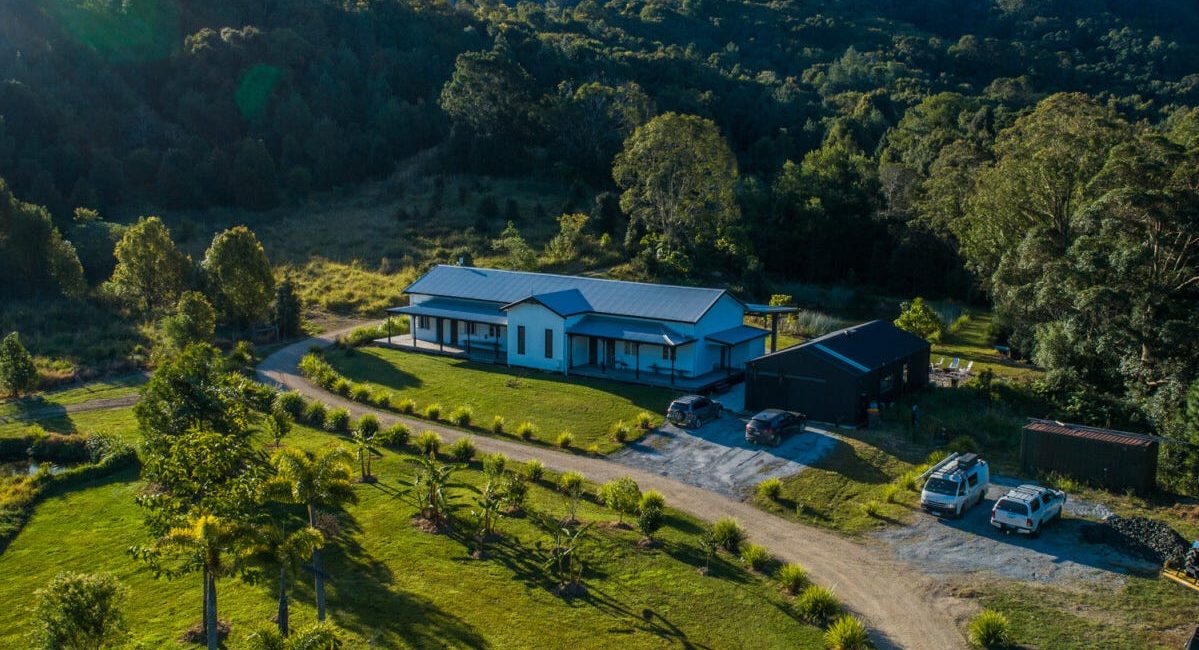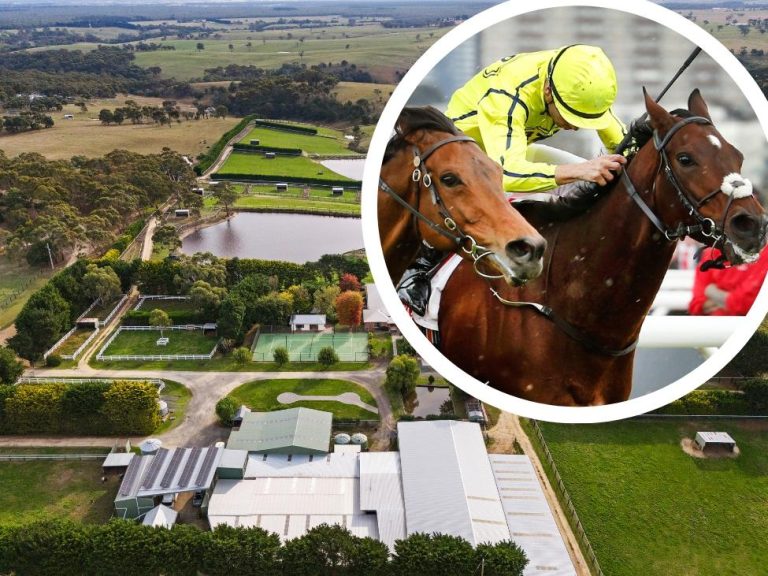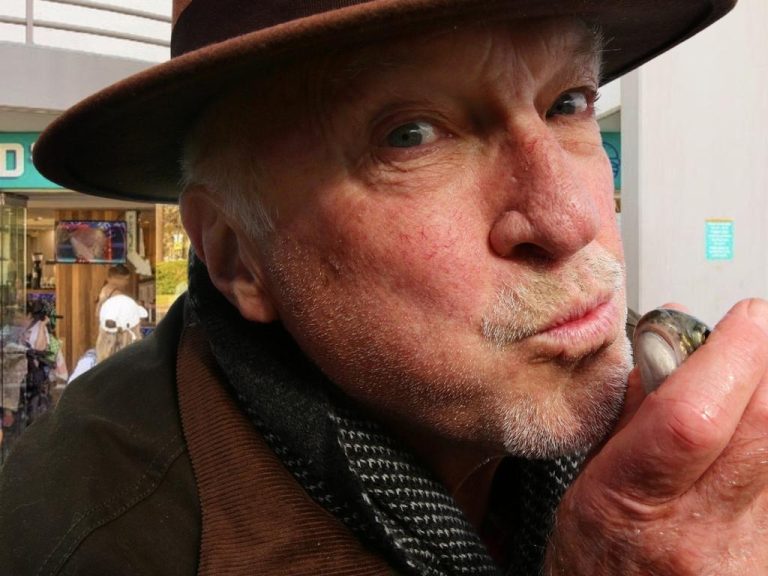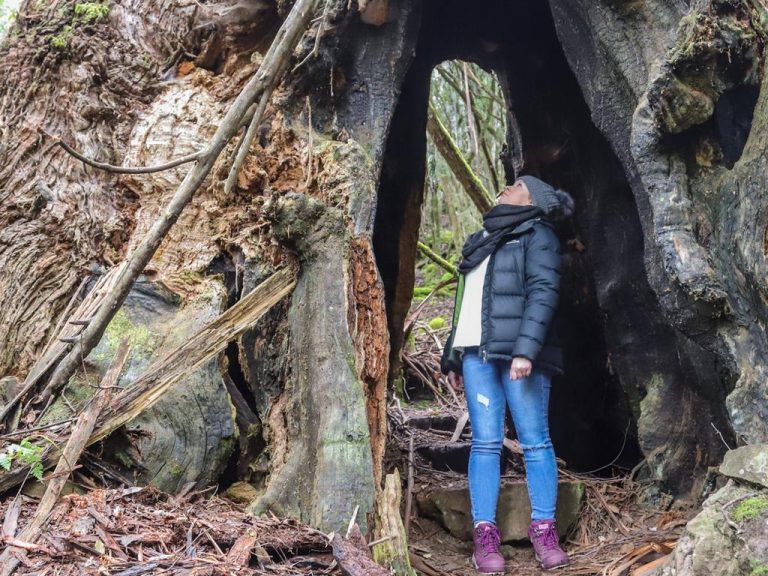Byron Bay Hinterland Retreat hits the market

A boutique wellness retreat and development opportunity on 33.9 hectares in the pristine foothills of the Byron Bay Hinterland is on the market for around $10 million, and will likely have broad appeal, experts say.
The Hinterland Retreat provides 15 rooms plus communal spaces across a variety of buildings, including a charming weatherboard house, a contemporary barn and a renovated shipping container.
Owner Matty Lee markets the place on Instagram as “inspiring accommodation for large groups”.

The 33.9 hectare property is surrounded by nature parks and hills. Picture: realcommercial.com.au/for-sale
Not a retreat operator, Mr Lee is selling up but not before securing two development approvals that could give the next owner scope to expand the retreat offerings.
George Hudson is one of the agents at Colliers managing the sale via an expressions of interest campaign closing on 5 October.
Mr Hudson said the Hinterland Retreat provides “an exciting opportunity to secure a large tourist-zoned site” in a sought-after destination.
“The Hinterland Retreat has inspired natural aesthetic, enhanced with native flora and fauna, bespoke designer features and relaxing open spaces fringed by rainforest that warmly welcomes guests to its unique retreat experience.”
Diverse buyers chasing wellness
Mr Hudson expects buyers interested in the Hinterland Retreat to be as diverse as the offering itself.
“We expect it to attract an array of potential purchasers, whether it be owner-operators looking to expand into the wellness space, current wellness tourism operators seeking opportunity in the Byron community or a developer capitalising on the approved expansion of the retreat and its facilities.”

The White House is listed as having seven luxury eco-chic rooms. Picture: realcommercial.com.au/for-sale
Vanessa Rader, head of research at Ray White Corporate, said the size of the landholding and its premium location will be enticing for both domestic and international investors, while the development potential will appeal to “domestic developers looking to capitalise on the tourism trend in this location”.
But given the ecotourism and wellness asset class is still only emerging, she said traditional hotel and tourism operators are “unlikely” to be interested, though it may tempt some who are trying to expand their portfolio according to environmental, social, and governance principles, such as Hilton.
“It is possible these and other operators could look to expand their green footprint and expand into these types of facilities,” she said.

The Barn is a large open plan meeting space with three bedrooms. Picture: realcommercial.com.au/for-sale
Ben Armstrong at LJ Hooker Commercial said the quality of ecotourism assets can be appealing to investors and owner-operators.
“They typically back onto bushland, farmland, or places of natural beauty. There are a lot of investors who are chasing ecotourism and wellness opportunities [or] looking to repurpose farmland in hinterlands for developments that are minimalist in design and are in keeping with the beauty of their surroundings.”
Plus, he said local councils often encourage their development through financial incentives.
“Many councils have planning concessions for ecotourism that allow proponents to bypass expensive infrastructure that you’d have to pay for in urban environments.”
Healthy future for wellness and ecotourism
It’s certainly a healthy time to buy into the wellness space. Since the pandemic, Australians have leaned more into their own wellness, which also impacts how they want to holiday.
Mr Armstrong said the outlook for ecotourism and wellness assets in the short and medium-term is “strong”.
“Domestic tourism has made yoga retreats and wellness centres very attractive for people looking to get away from the hustle and bustle.”
The figures back up the trend. By the end of 2022 the global wellness tourism market is predicted to be worth $919 billion, growing to a record $1.2 trillion by 2027, according to the Wellness Tourism Industry Statistics 2021 outlined in Colliers’ Wellness Tourism Report.

Experts believe the retreat is poised to capitalise on the growth in wellness tourism. Picture: realcommercial.com.au/for-sale
In recent months a slew of retreat owners have sought to cash in.
While Sydney’s Billabong Retreat is on the market, Gwinganna Lifestyle Retreat is close to sale with founder Tony De Leede entering exclusive negotiations with an Australian buyer. It comes as Gold Coast Council approved his new wellness retreat Eco View Resort next door, which will be available for exclusive hire by groups.
The moves follow the sale of Olivia Newton-John’s Gaia Retreat and Spa to Andrew “Twiggy” and Nicola Forrest in October 2021.
Conscious holiday choices
Australians are not only prioritising time in nature, they’re also becoming increasingly concerned about climate change, enhancing the appeal of ecotourism operations, Ms Rader said.
“Those who hold environmental issues in high regard will also start to demand that of their employer, food sources, energy providers as well as their holiday destination.”

After living through the pandemic, many everyday Australians are now focusing on holidays that can help them recharge and look after their health. Picture: realcommercial.com.au/for-sale
Mr Armstrong agreed younger Australians will holiday according to their principles.
“You have a generation coming through that is very environmentally-conscious and supportive of low-impact tourism opportunities rather than big scale-high rises on beachfronts.”







